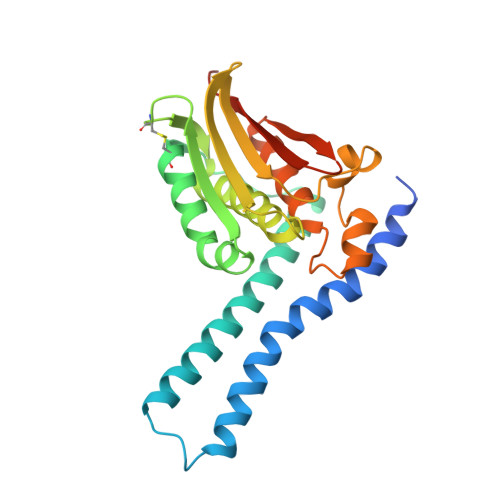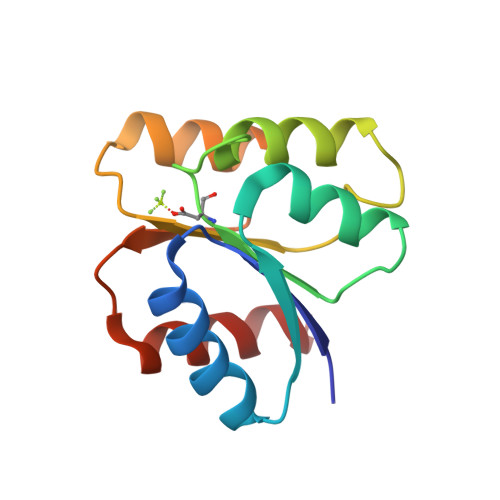Structural basis of a rationally rewired protein-protein interface critical to bacterial signaling
Podgornaia, A.I., Casino, P., Marina, A., Laub, M.T.(2013) Structure 21: 1636-1647
- PubMed: 23954504
- DOI: https://doi.org/10.1016/j.str.2013.07.005
- Primary Citation of Related Structures:
4JA2, 4JAS, 4JAU, 4JAV - PubMed Abstract:
Two-component signal transduction systems typically involve a sensor histidine kinase that specifically phosphorylates a single, cognate response regulator. This protein-protein interaction relies on molecular recognition via a small set of residues in each protein. To better understand how these residues determine the specificity of kinase-substrate interactions, we rationally rewired the interaction interface of a Thermotoga maritima two-component system, HK853-RR468, to match that found in a different two-component system, Escherichia coli PhoR-PhoB. The rewired proteins interacted robustly with each other, but no longer interacted with the parent proteins. Analysis of the crystal structures of the wild-type and mutant protein complexes and a systematic mutagenesis study reveal how individual mutations contribute to the rewiring of interaction specificity. Our approach and conclusions have implications for studies of other protein-protein interactions and protein evolution and for the design of novel protein interfaces.
Organizational Affiliation:
Computational and Systems Biology Initiative, Massachusetts Institute of Technology, Cambridge, MA 02139, USA; Department of Biology, Massachusetts Institute of Technology, Cambridge, MA 02139, USA.


















